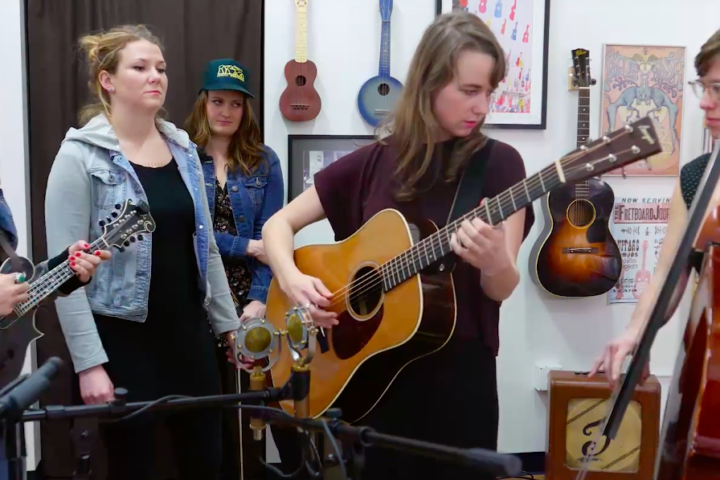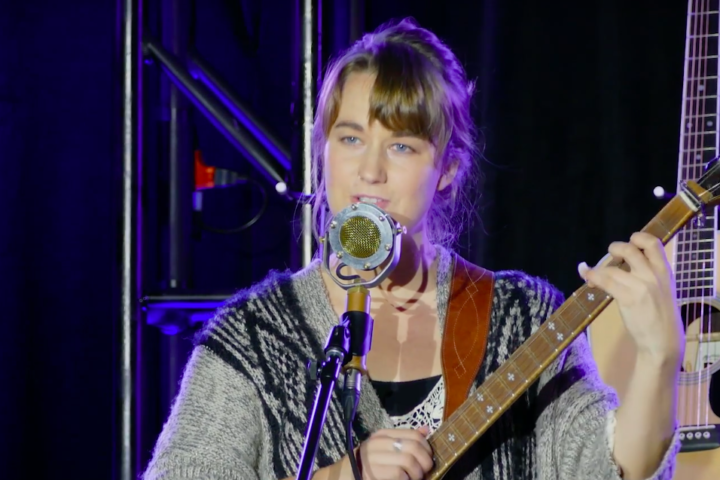Della Mae swung through Seattle three times in a little more than six months, playing shows at the Neptune Theater, the Showbox and the Tractor Tavern. Those are three very different rooms–a medium-sized box of a theater, a large wide-and-deep club and a more intimate club, respectively–though you couldn’t tell listening to the ladies do their thing. Which begs the question, how do they do it? After seeing their most recent show, at the Tractor, and getting a closer look at their setup, we reached out to Della Mae’s tour manager/front-of-house engineer, Tim Reitnouer, who agreed to tell us how it’s done.
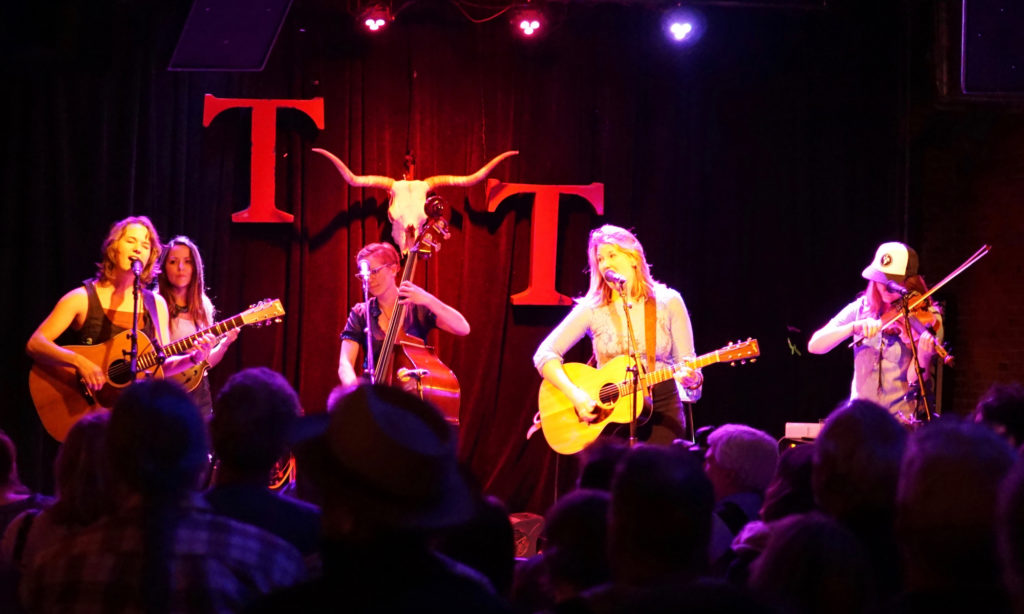
Fretboard Journal: What’s your general approach/philosophy working front of house for Della Mae?
Tim Reitnouer: With Della Mae I try to be as transparent as possible. One of the things I love about acoustic music is that it speaks for itself. It doesn’t require heavy effects or exaggerated production (though we’re not opposed to lights, haze and a rowdy crowd). Its most natural form is a handful of musicians sitting around picking tunes–simple and intimate. So, when I approach the mix I try to replicate that experience for a large group of people.
FJ: What’s the basic setup? How does it change from venue to venue?
TR: We travel with an in-ear monitor (IEM) rig that consists of a Behringer X32 Rack and five Sennheiser G3 IEM transmitters, along with a full stage package of mics, DIs and cabling. Two years ago I upgraded the band’s old rig by adding two more IEM transmitters so everyone could have their own stereo mix and switched from a Mackie console to the rack mounted Behringer (both controlled via iPad). Using two iPads on stage, each band member can control exactly what they hear in their in ear mix. Traveling with our own IEMs keeps things consistent from night to night for stage monitoring, and by cutting down on overall stage volume normally created by using wedges I can get a cleaner and more controlled sound front of house [FOH].
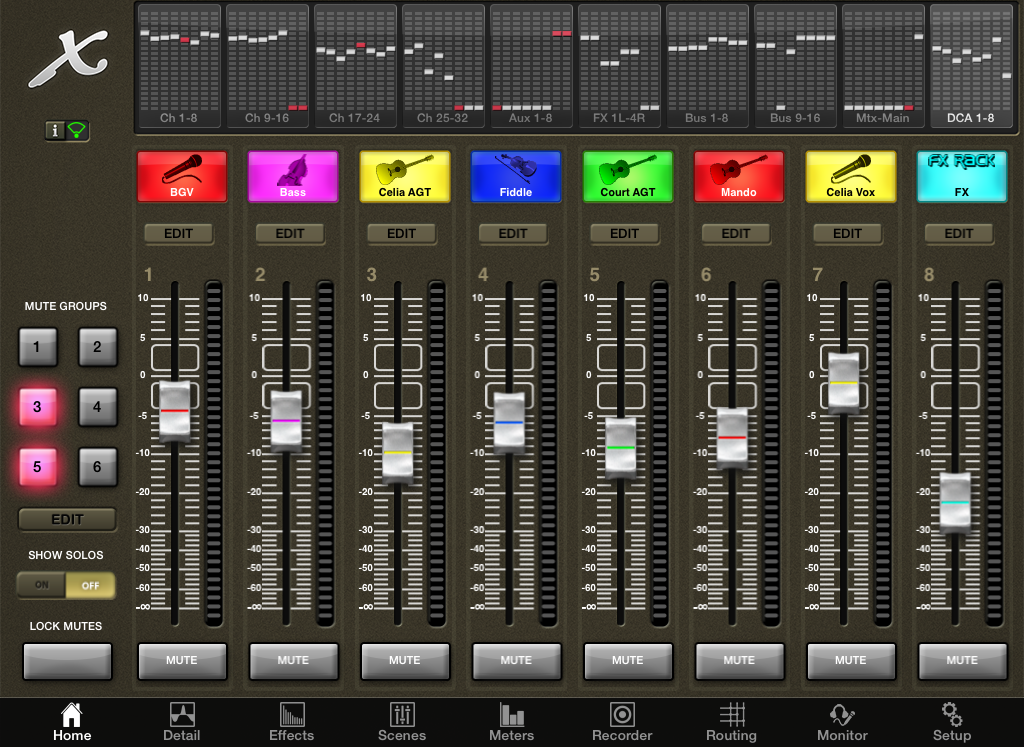
Della Mae plays a wide variety of spaces–from a mule ranch in Oregon to the Greek Theater in Los Angeles–so my challenge was to build a rig that would be effective in any environment. Our rig allows me to either mix via my iPad by sending the house engineer a left, right and sub feed (which I do in most of the club venues we play) or use the built-in split and send each of our 13 lines individually to the house FOH desk. This option works well for large venues or festivals when I don’t want to rely on my router for connectivity to the stage and mix control.
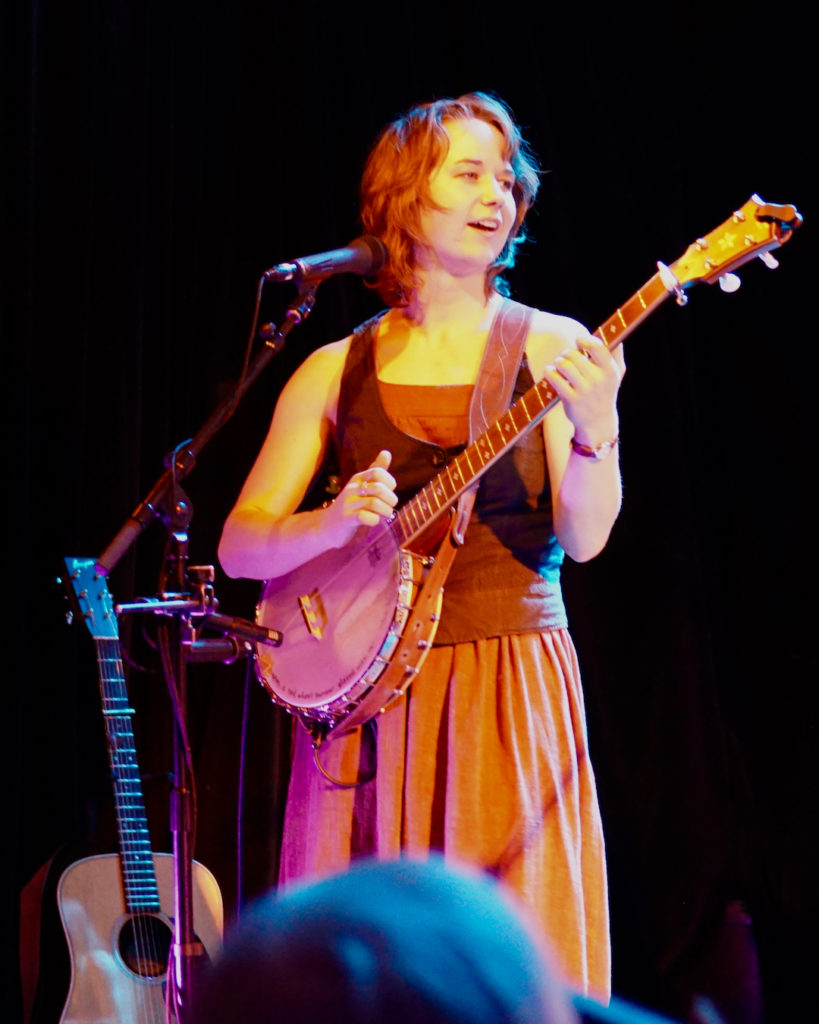
Having the rig at festivals is a huge advantage for us. There are a lot of bluegrass festivals that want you to load in, change over the stage and soundcheck in 15 minutes or less, and having to dial in wedge mixes really eats into that time. With our own setup, monitors are no longer a variable and I can spend that precious change over time building a mix at FOH so we’re sounding good from the first downbeat.
FJ: Do you have a favorite venue? A Best Day Ever story?
TR: We played a show with the Infamous Stringdusters earlier this year at The Fillmore in San Francisco. As the opening band we didn’t get much time to soundcheck–maybe 15 minutes to setup, make sure the band was comfortable on stage and get a rough mix together. My job is a lot more enjoyable when I’m not having to fight against the room (usually due to poor acoustic treatment or an improperly hung/time-aligned PA). There are some spaces that are the exact opposite–where the sound of the room can compliment and improve your mix. Luckily, The Fillmore is one of those spaces. I was able to push up the faders, roll in some high pass filters and automatically feel pretty comfortable with the mix. Having a show not just sound good but feel good is always a great experience–especially in a historic venue like The Fillmore.
Another great venue is the Grey Fox Bluegrass Festival in New York state. It’s no secret that Grey Fox is one of Della Mae’s all time favorite festivals. It has become a personal favorite for me as well. The crew there does an excellent job deploying their rig for acoustic music so when you walk up to the FOH console you have an excellent starting point. That, combined with the beautiful warm breeze of an evening set at an outdoor festival makes for an incredibly enjoyable mixing experience.
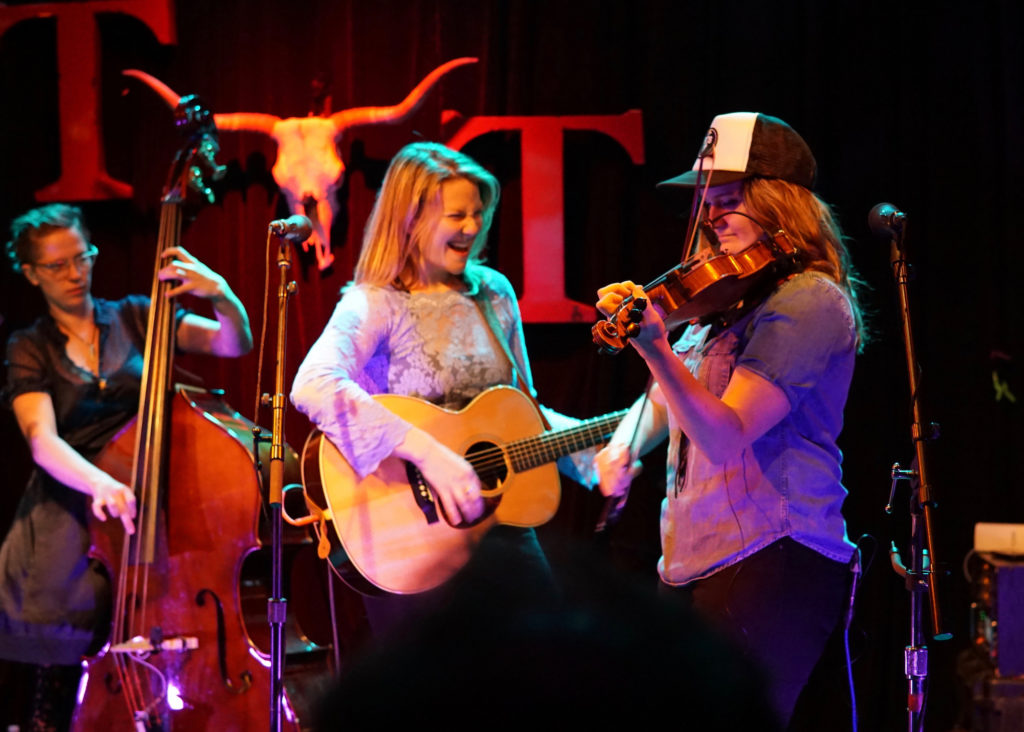
FJ: Are there any particular challenges in capturing the stage sound of Della Mae?
TR: The band is very dynamic, which is wonderful. However, when we’re dealing with crowds that aren’t necessarily there solely to listen it can be a challenge to mix with the level of detail that I prefer while maintaining enough volume to get over crowd noise.
Courtney’s guitar can also be a challenge, in a good way. She plays a Bourgeois guitar, which has some of the fullest tone I’ve ever heard from an acoustic guitar. It has such a wide, beautiful frequency range that it can sometimes be difficult to fit it into the mix while still preserving the acoustic integrity of the sound. Every day after tuning the PA with my tuning tracks I have Courtney start soundcheck with her guitar and ultimately tune the PA further using that as a reference. If I can get a nice, full, stable sound blending her mic and pickup, I know the other instruments and vocals will fall in just fine.
FJ: Can you run us through the everyone’s rigs (instruments, microphones, pickups)?
TR: I’ll work left to right across the stage from the audience’s perspective.
Courtney Hartman plays a custom Bourgeois dreadnought guitar with a K&K pickup through a Radial Tonebone DI. Her banjo is a Morgan Monroe with a Fishman Classic Series pickup also run through the Radial Tonebone DI. I blend the pickups on both instruments at FOH with an Audio Technica 4053b condenser mic.
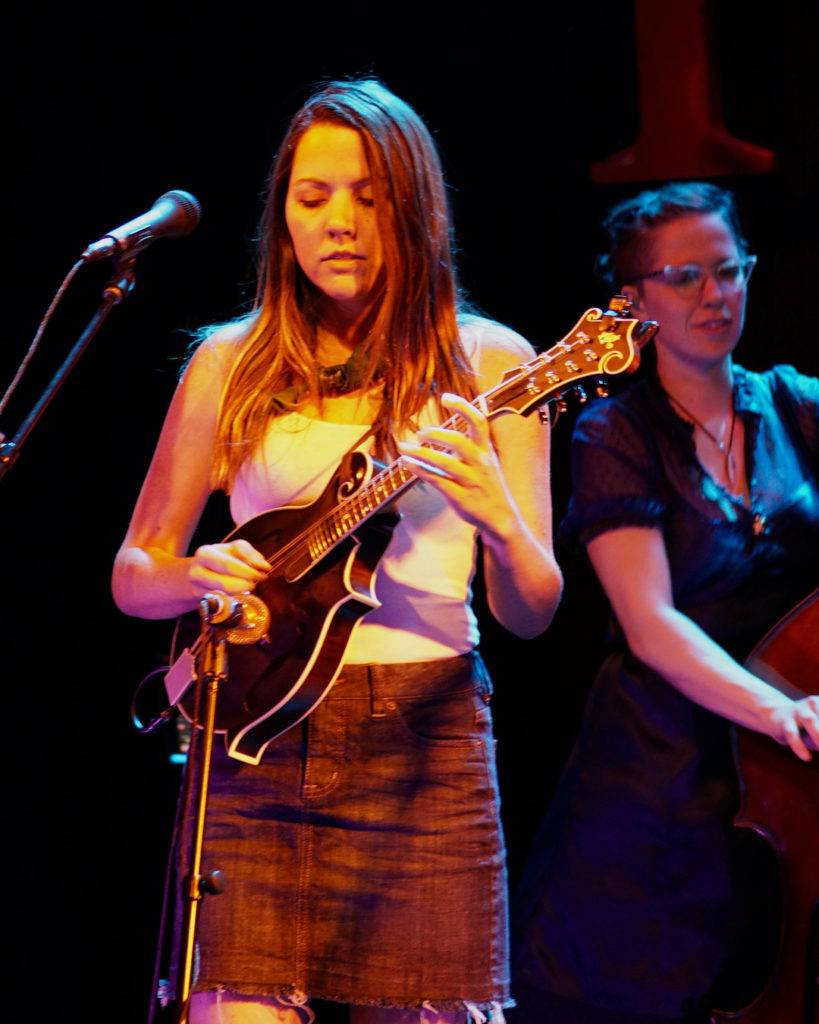
Jenni Lyn Gardner plays a Randy Wood mandolin with a K&K pickup through an LR Baggs Venue DI. She has an Ear Trumpet Labs Chantelle condenser mic, which I blend at FOH.
For both Jenni and Courtney, having instrument mics on stage in addition to their pickups gives them a much more natural sound in their IEMs and allows them to have some volume control while playing without having to go to the iPad to make adjustments.
Celia Woodsmith also plays a Bourgeois guitar with a Fishman pickup played through a Fire-Eye RedEye DI. She also uses a stomp box from BeatRoot for a kick drum sound.
Kimber Ludiker plays a Jonathan Cooper fiddle with a DPA4099 clip-on mic.
Zoe Guigueno plays a Chadwick folding bass with a Fishman Full Circle pickup through a Radial J48 DI.
Courtney, Celia and Kimber all sing through Ear Trumpet Labs Edwina condenser microphones and Jenni uses a Miktek PM9 dynamic mic. I love the sound and look of the Ear Trumpets and we use them on almost every show, but I carry three additional Miktek PM9s for especially small stages or rooms where the PA is particularly poorly placed.
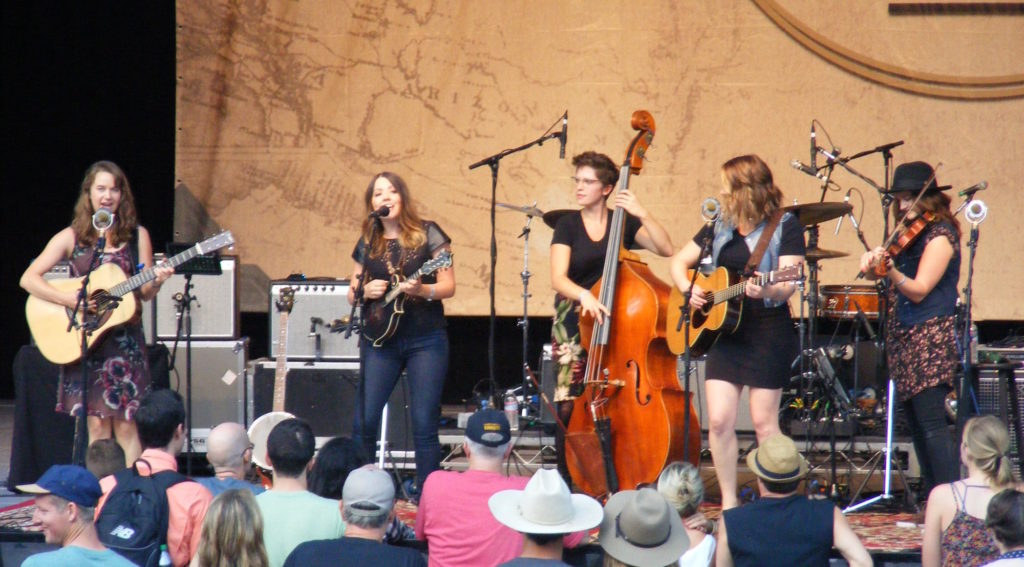
Photo Credit: Gary Reitnouer
Feature Image Photo Credit: Tim Reitnouer
